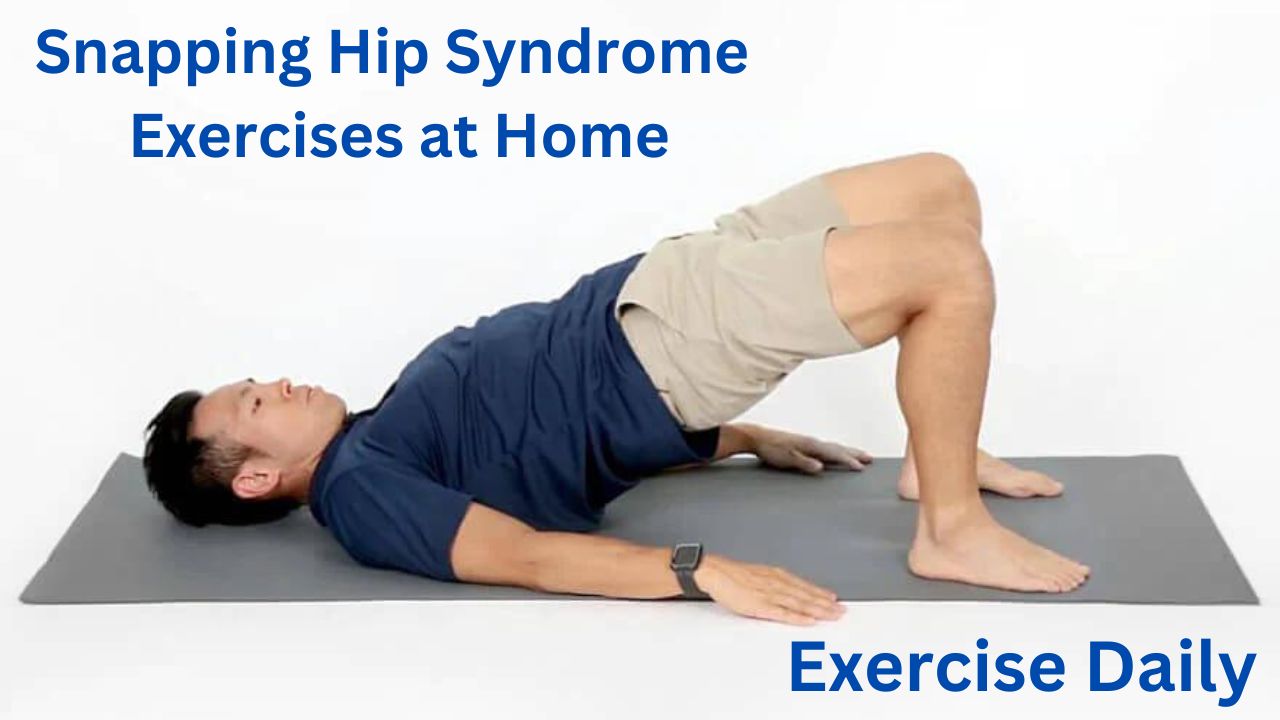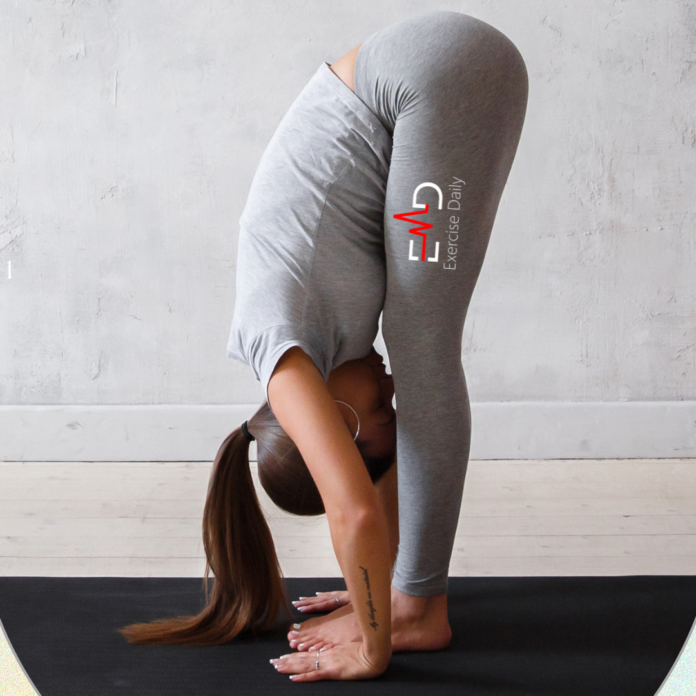Table of Contents
Exercise Daily – If you’re like most people, you probably don’t think about your hip joint very often. But that’s a mistake. Your hip joint is one of the most important joints in your body, and it’s responsible for a wide variety of motions and activities. That’s why it’s important to keep your hip joint healthy and that means regularly exercising it. In this post, we will introduce you to some simple exercises you can do to help keep your hip joint healthy and functioning optimally.
Snapping Hip Syndrome Exercises
There are many exercises you can do to help improve your snapping hip syndrome. They should be done regularly and with a qualified therapist to ensure maximal benefits.
Here are some exercises that can help:
1. Strengthening Exercises
- Strengthening exercises should be tailored to the individual’s needs and goals. However, some examples include quadriceps isolation, gluteus maximus activation, and hamstring curls.
- Heavier weight is better because it causes more muscle recruitment and results in greater strength gains.
- Aim to complete at least two sets of 12–15 repetitions per exercise.
- If you experience discomfort or pain, reduce the number of repetitions or move to a different exercise.
2. Balance Training
- Balance training can help improve balance and coordination, which are key factors in preventing falls and developing good hip stability.
- To increase balance skills, try using wobbling objects (such as a ball or an egg), walking on uneven surfaces, or performing balancing drills on unstable surfaces such as balls placed on trampolines or balance boards.
- Start with shorter intervals (30 seconds) and work up to longer intervals (60 seconds).
- Use moderate intensity (70% of maximum effort) throughout the workout.
What is Snapping Hip Syndrome?
Snapping Hip Syndrome is a condition that affects the hip joint. It is a disorder in which the joint snaps or pops when it moves, causing extreme pain and inflammation. Snapping Hip Syndrome can be caused by a number of factors, including genetics, age, arthritis, or trauma.
There is currently no cure for snapping hip syndrome, but there are treatments available that can help ease the symptoms. Treatment options may include physical therapy, medications, and surgery. Surgery may involve fixing the joint with metal or plastic implants. Drugs and physical therapy are often recommended first to reduce inflammation and improve mobility before surgery is considered.

Causes of Snapping Hip Syndrome
Snapping hip syndrome is a disorder that affects the hip joint. The cause of snapping hip syndrome is unknown, but it may be caused by a combination of genetic and environmental factors.
There is no known cure for snapping hip syndrome, but there are treatments available that can help people manage the disease. Treatment options include surgery, physical therapy, and medication.
People with snapping hip syndrome often experience pain and disability in their hips. The pain may vary depending on how severe the condition is, but it typically lasts for at least six months. A disability may also be significant, as people with snapping hip syndrome often have difficulty performing activities that involve their hips.
Symptoms of Snapping Hip Syndrome
Snapping hip syndrome is a condition that causes the hip joint to suddenly “snap” or crack. This can be a very serious injury, and can lead to long-term disability if not treated properly.
There are many symptoms of snapping hip syndrome, but the most common ones are:
1) Pain in the hip region, which can be localized or diffuse
2) Difficulty walking or standing because of instability in the joint
3) Limited range of motion in the joint due to stiffness or guarding
4) Recurrences of pain and/or mobility problems over time
5) Swelling and redness around the hip region
Prevention of Snapping Hip Syndrome
Snapping Hip Syndrome is a condition in which the hip joint snaps forward and backward. It is most often caused by overuse or abuse of the hip, which can lead to micro trauma to the hip joint. The syndrome can be quite disabling and result in repeated inflammation and pain. There are many exercises that you can do to prevent snapping hip syndrome.
To prevent snapping hip syndrome, start by recognizing the warning signs of the condition. If you feel like your leg is going to snap when you move it, stop and rest your leg for several minutes. Also, make sure that you stretch your hip regularly to keep it flexible.
Once you have identified the warning signs of snapping hip syndrome, start doing exercises that will help strengthen your hips. Include exercises that stretch both your front and back legs at the same time, as this will help avoid microtrauma to your joints. You can also try concentric and eccentric squatting exercises, jumping jacks, and lunges.

If you experience pain or discomfort in your hips, please consult a doctor before beginning any exercise regimen. However, following these simple guidelines should help you avoid snapping hip syndrome in the first place. You may need the Exercises To Get Rid Of Knee Fat.
How to do a Hip Circlip Exercise
Hip Circlip Exercise
There are a few different hip circlip exercises you can do to help snap your hip and get relief from snapping hip syndrome.
The first exercise is called the “knee-up” exercise. Start by lying on your back with your legs bent at 90 degrees and your feet flat on the ground. Place one hand behind your head and use the other to lift your hips off the ground, until they’re hovering just above it. Hold this position for two seconds, then slowly lower them back to the ground, making sure to squeeze your glutes at all times. Repeat 10 times. It is the Best Exercises for Beginners.

The next exercise is called the “tilt-table” maneuver. Start by standing with feet shoulder-width apart, holding a moderate weight in each hand (a weightlifting belt will also work). Tilt your torso backward until you feel a strong stretch in the front of your thighs, then hold for two seconds before returning to the starting position. Do six sets of 12 reps each.
The final exercise is called “the drill.” For this one, start by sitting down in a comfortable position with your feet flat on the ground and knees bent 90 degrees. Lean back until you feel a good stretch in both legs, then press into your heels and lift yourself up until you’re standing tall. Flex Your Abs Throughout The Movement To Help Keep Your Hips Fixed In Place And Avoid Injury! Slowly lower yourself back down to the ground while keeping
How to do a Glute Bridge Exercise
The glute bridge is a great exercise for snapping hip syndrome. To do the exercise, lie flat on your back with both feet flat on the ground and your legs bent at the knee. Place your hands behind your head, and lift your hips until they are off the ground, then lower them back down. Do 10 reps per side.
Conclusion
In this article, we provide you with a list of exercises that can help to correct and prevent the development of snapping hip syndrome. By following these exercises regularly, you should be able to avoid the symptoms of snapping hip syndrome and enjoy pain-free use of your hips for years to come.






